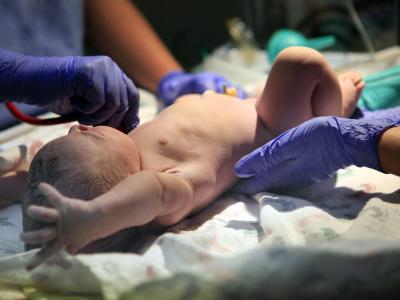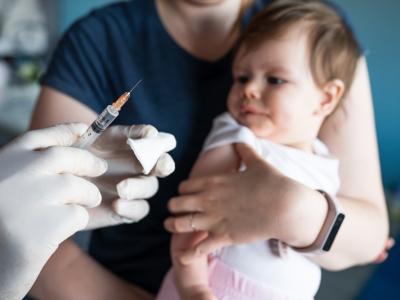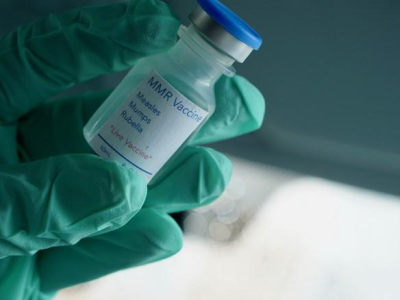COVID vaccine-elicited T cells provide robust protection against Omicron
Two studies yesterday in Nature show that the Johnson & Johnson (J&J) and Pfizer/BioNTech COVID-19 vaccines provide robust cellular protection against serious illness caused by the highly transmissible Omicron (B.1.1.529) variant, despite evidence of waning neutralizing antibody protection against the virus.
In one study, University of Cape Town researchers in South Africa evaluated the ability of vaccine-elicited T cells to react with Omicron's spike protein in vaccine recipients and in unvaccinated COVID-19 survivors.
Among the 70 participants, 70% to 80% of the CD4+ and CD8+ T-cell response to Omicron was maintained across all three study groups. The concentrations of Omicron cross-reactive T cells were similar to those against the Beta (B1351) and Delta (B1617.2) variants, even though Omicron is considerably more mutated.
Among the 19 hospitalized patients infected with Omicron, T-cell responses to the variant's spike, nucleocapsid, and membrane proteins were comparable to the 49 patients hospitalized in previous pandemic waves in which the wild-type, Beta, or Delta variants were dominant.
"The extent to which other components of the adaptive response such as T cells may still target Omicron and contribute to protection from severe outcomes is unknown," the researchers wrote.
The other study, by Beth Israel Deaconess Medical Center (BIDMC) researchers, evaluated both cellular and antibody immune response in 47 COVID-19 vaccine recipients 1 and 8 months after vaccination.
Among COVID-19 vaccine recipients, median Omicron spike-specific CD8+ T-cell responses were durable and were 82% to 84% of those elicited by the wild-type virus. T-cell cross-reactivity against both Delta and Omicron was 80%.
"Our data provide immunological context for the observation that current vaccines still provide robust protection against severe disease and hospitalization due to the Omicron variant despite substantially reduced neutralizing antibody responses and increased breakthrough infection," corresponding author Dan Barouch, MD, PhD, said in a BIDMC news release.
"Given the role of CD8+ T cells in clearance of viral infections, it is likely that cellular immunity contributes substantially to vaccine protection against severe SARS-CoV-2 disease," Barouch said. "This may be particularly relevant for Omicron which dramatically evades neutralizing antibody responses."
Jan 31 Nature University of Cape Town study and BIDMC study
Jan 31 BIDMC news release
Study: COVID vaccine promotion did not boost uptake in nursing facilities
A new study shows that a multicomponent vaccine campaign—which included staff recognition, targeted education, and small gifts—did not significantly increase COVID-19 vaccination rates among skilled nursing facility (SNF) staff and residents from December 2020 to March 2021. The study was published yesterday in JAMA Internal Medicine.
The study is based on outcomes seen at 133 SNFs across 16 states, with 63 and 70 facilities in the intervention and control arms, respectively. The SNFs were identified through the Pharmacy Partnership Program, which supplied vaccines to the SNFs.
In the intervention arm, educational videos, social media campaigns, virtual town halls, and small gifts (masks, t-shirts), were meant to address vaccine hesitancy and concerns. Despite the vaccine campaign, more than half of all SNF staff remained unvaccinated at the end of the trial period.
In the intervention arm, 82.5% (95% CI, 81.2%-83.7%) were vaccinated by March 2021, compared with 79.8% (95% CI, 78.5%-81.0%) in the usual-care arm (marginal difference 0.8%; 95% confidence interval [CI], −1.9% to 3.7%). Among staff, 49.5% (95% CI, 48.4% to 50.6%) were vaccinated in the intervention arm, compared with 47.9% (95% CI, 46.9% to 48.9%) in usual-care arm (marginal difference: −0.4%; 95% CI, −4.2% to 3.1%).
"The multicomponent intervention did not improve vaccination rates in residents or staff with modest implementation of the intervention components. Given the low rates of staff vaccination, there is an urgent need to identify successful vaccination strategies in this setting," the authors concluded.
Nursing homes were the site of the first deadly outbreaks of COVID-19 in the United States, and elderly Americans remain the group most at-risk for severe outcomes from the virus. SNF staff were more likely to express concerns about the speed of vaccine developments, as well as misinformation about COVID-19 vaccines and fertility.
Jan 31 JAMA Intern Med study












